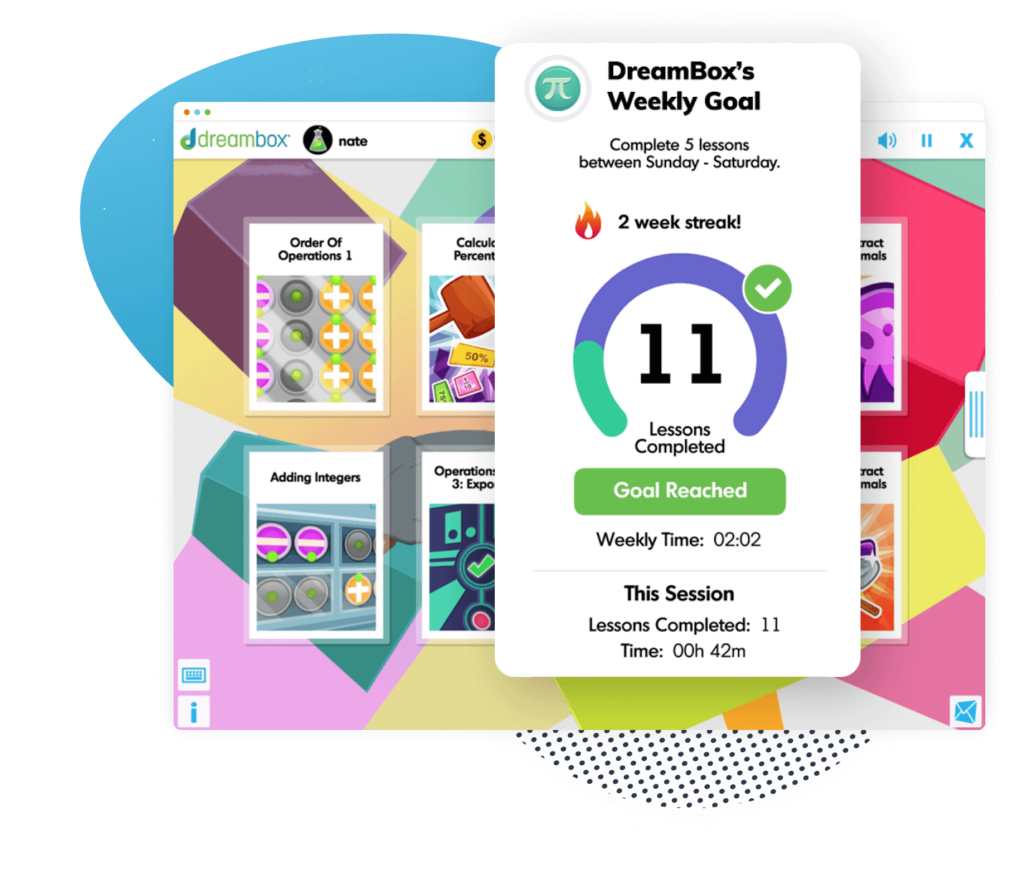Kindergarten Brain Breaks
Need a reset? These simple brain breaks help kindergarteners recharge, refocus, and have a little fun along the way!

Author
Katie Wickliff
Published:
August 2025
Key takeaways
- • Brain breaks are quick, purposeful pauses that help young students reset and refocus before returning to work
- • It’s important to incorporate a mix of breaks that use physical movement, mindfulness, and creative play.
- • Kindergarteners can focus on a single task for about 10-15 minutes at a time, so brain breaks are especially important for this age group.
As a parent or teacher, do you ever take a break from your work to stretch your legs, grab a cup of coffee, or make a quick call to a friend? Maybe you’re struggling to write an important email or losing focus while reading a detailed document. Chances are, the answer is yes, and studies have shown that these brief periods of rest are beneficial to the brain, allowing it to quickly relax and recharge. Children need these “brain breaks” too, especially during the school day.
This article explores the benefits of brain breaks for kindergarteners, shares 15 fun and easy examples, and explains how to incorporate a variety of brain breaks into the classroom or homeschool. Let’s get started!
What Are Brain Breaks for Kindergarten?
Brain breaks are short, intentional breaks that give students a chance to briefly pause their work to recharge and regain focus. These breaks use physical movement, mindfulness, or imaginative activities to improve concentration and inject a bit of fun into the school day! Brain breaks play a specific role in early education, and kindergarteners can especially benefit from these activities.
Benefits of Brain Breaks for Young Learners
Anyone who works (or lives) with kindergarteners knows that these youngest students are still developing emotional regulation, attention span, and self control. That’s why brain breaks are especially beneficial in the kindergarten classroom. Research has shown that regular classroom activity breaks significantly improved focus and motivation for learning. Additionally, other studies show that when kids take short breaks, their brain shifts into an active mode that helps process memories and make sense of the world. I’ve also seen firsthand how students feel calmer and less stressed after taking a brain break.
Table of contents
Strengthen your math skills with DreamBox
Kindergarten Math Resources
See how DreamBox can help your kindergartener with math.
15 Fun and Easy Kindergarten Brain Break Ideas
It’s important not to confuse brain breaks with recess or other types of free time, as brain breaks are purposefully structured and brief. This way, kids get just the right amount of reset without becoming overly stimulated or distracted. Here are 15 brain break ideas for kindergarteners, sorted into different categories: movement, mindfulness and breathing, and creative/imaginary.
Movement-Based Brain Breaks
- Animal Walks: Have kids move like different animals. For example, they can hop like a frog, stomp like an elephant, swim like a fish, or run like a cheetah. (The last one is probably best outside!)
- Dance Party: Get moving! If kids are reluctant to dance, try using kid-friendly websites and apps with guided routines. Kids love following along with the silly moves.
- Invisible Jump Rope: pretend to jump rope for short bursts, using silly arm and leg movements. Pretending to jump rope helps kids practice balance, coordination, and power, all while using their imaginations.
- Simon Says: This classic game is a great way to get kids moving while developing listening skills. To play, give simple instructions like “Simon says touch your toes,” but only follow the action if it starts with “Simon says.” Let kids take turns as Simon!
- Hot Potato: this fast-paced brain break helps kids release energy, build coordination, and practice taking turns. To play, have children sit or stand in a circle and pass a small, soft object (like a beanbag) around while music plays. When the music stops, the child holding the “hot potato” does a silly action. The whole group copies, and the game continues.
Mindfulness and Breathing Brain Breaks
- Stuffed Animal Breathing: Each child lies down and places a small stuffed animal on their stomach. As they breathe, the stuffed animal gently rises and falls, like it’s floating on a slow, calm ocean. This encourages children to breathe into their bellies, which can relax the nervous system. My own children love this exercise.
- The Magic Bubble: Ask kids to close their eyes and imagine they’re surrounded by a big, translucent bubble. The bubble is soft but strong, and it can be any color they wish. The bubble is cozy and safe, and just for them. As they breathe in, they can imagine the bubble floating away to their favorite place.
- The Star Inside: Ask kids to close their eyes and imagine a glowing star inside their chests. The star can be any color they choose, but as they breathe in, the star grows bigger and brighter. As they breathe out, the light gently moves through their whole body.
- Five Finger Breathing: Kids hold up one hand and trace up and down each finger with the other. As they move up a finger, they breathe in; as they move down, they breathe out. This rhythmic pattern combines breathing with gentle movement and helps with self-regulation.
- Flower/Candle Breathing: Invite kids to close their eyes and take a slow, deep breath as if they’re smelling a flower. Then, as they exhale, have them imagine gently blowing out a candle. This simple breathing exercise helps children relax and refocus.
Creative and Imaginative Breaks
- Imaginary Vacation: This activity can immediately follow the Magic Bubble visualization or can be used on its own. Ask kids to close their eyes and imagine going on a vacation wherever they wish. Then, give them a few minutes to draw their imaginary vacation.
- Silly Story Chain: Begin a story with one attention-getting sentence, like “Once upon a time, there was a tiny hedgehog who loved playing soccer…” then go around the circle, allowing each child to add a sentence to this “silly” story. It’s sure to spark plenty of creative ideas and lots of laughter.
- Mood Drawings: Ask kids to use crayons or markers to draw their current mood. If they “don’t know” how they’re feeling, gently prompt them to draw how they feel when they’re happy, sad, or frustrated. Mood drawings help young kids reflect on their feelings and process their emotions in a positive way.
- Picture Prompts: Show kids a silly photograph or illustration and ask them “What happens next?” Kids draw the next part of the story, sparking creativity and reinforcing basic story elements.
- Superhero Training Center: Tell kids that they’re superheroes in training, and their mission is to save the day from an evil villain. Lead them through exercises where they jump tall buildings in a single bound, fly away from their enemies, and strike their strongest superhero pose.

The math program that drives results
Get started today!
DreamBox adapts to your child’s level and learning needs, ensuring they are appropriately challenged and get confidence-building wins.
How to Incorporate Brain Breaks into the Kindergarten Day
No matter what unique learning styles are in your kindergarten group, brain breaks are easily incorporated into the school day. These breaks can either be scheduled after focused work sessions or spontaneous as the need arises. Here are a few tips to help make the most of these international pauses:
- Timing: introduce breaks before students show signs of restlessness or inattentiveness. Studies have shown that 5 year olds generally can focus on a single task for 10-15 minutes at a time, and while every child is different, keep that in mind as you schedule breaks. You know your students best, however, and feel free to spontaneously take a break as they need.
- Visual Timers: Use a visual timer to count down the moments until the brain break is over. Even if kindergarteners don’t know how to tell time, having a visual reminder goes a long way in keeping breaks under control.
- Variety: When incorporating brain breaks into the kindergarten classroom, it’s essential to mix it up! Offer a variety of styles of breaks using physical movement, mindfulness, and creativity. Using our list of 15 brain breaks is a great way to build consistency, because kindergarteners quickly begin to anticipate each activity. Also, I found that having that predictable break built into the day helped them concentrate more during worktime.
If you have time for a longer break and want an entertaining way to keep kids learning while having fun, try Dreambox Math. This interactive program strengthens math skills through games and other engaging activities. Also check out these 40 fun brain breaks for kids.
Take at home math practice to the next level
Empowering parents and educators to make math practice more impactful. Plus, your kids will love it.


About the Author
Katie Wickliff
Katie holds a master’s degree in Education, has over 15 years of education experience as a primary classroom teacher, and is Orton-Gillingham certified tutor. Most importantly, Katie is the mother of two primary school students, ages 8 and 11. She is passionate about maths education and firmly believes that the right tools and support will help every student reach their full potential.